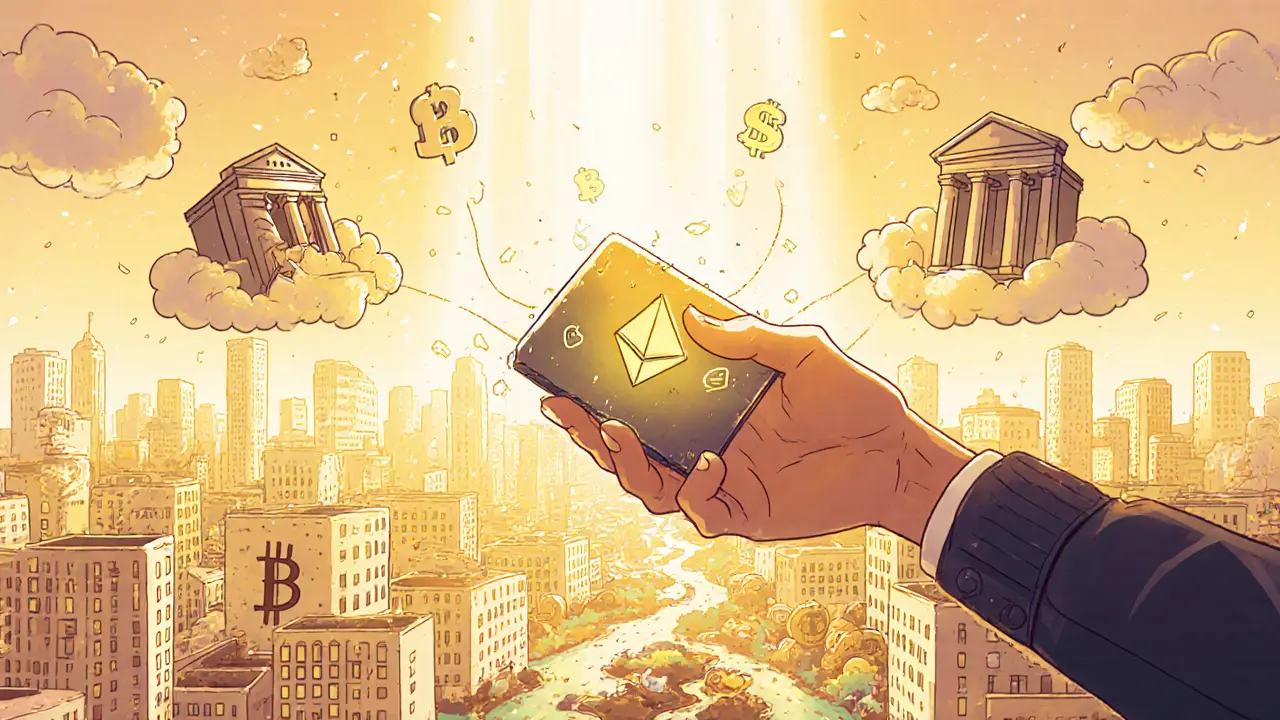Decentralized Finance: What It Is, How It Works, and What You Need to Know in 2025
When you think of banks, you think of branches, tellers, and paperwork. But Decentralized Finance, a financial system built on blockchain networks that lets people lend, borrow, and trade without banks. Also known as DeFi, it’s not about replacing banks—it’s about removing them entirely. If you’ve ever used a crypto exchange, staked tokens, or earned interest on your Bitcoin, you’ve already touched DeFi. It’s not science fiction. It’s running right now on Ethereum, Base, and other blockchains, handling billions in daily transactions.
DeFi doesn’t need a middleman. Want to borrow USDC? You lock up ETH as collateral and get the loan in minutes—no credit check, no form signing. Want to earn yield? You add liquidity to a pool and get paid in real time, not at the end of the month. That’s the power of smart contracts: code that runs automatically when conditions are met. And it’s not just for traders. People in Venezuela use DeFi to protect their savings from inflation. In Germany and the UK, regulators are now forcing DeFi platforms to follow strict rules—licensing, KYC, and anti-money laundering checks. This isn’t the wild west anymore. It’s becoming a regulated industry, and that’s changing everything.
Stablecoins like USDC and DAI are the backbone of DeFi. They’re the glue that keeps everything stable when Bitcoin and Ethereum swing wildly. You can’t lend or trade effectively if your collateral vanishes overnight. That’s why the best DeFi strategies in 2025 focus on stablecoins—using them for yield, swaps, and collateral. But not all stablecoins are equal. USDC is backed by real cash and bonds. DAI is decentralized, built on crypto collateral. USDe offers yield but comes with higher risk. Choosing the right one depends on what you’re trying to do—and how much risk you’re willing to take.
DeFi also relies on Layer 2 solutions like zk-Rollups and Optimistic Rollups. Without them, Ethereum fees would make small trades impossible. These tools cut costs by 99% and speed up transactions to milliseconds. That’s why DeFi apps now feel as smooth as a mobile banking app. And behind the scenes, distributed ledger technology is quietly powering everything—from token transfers to NFT ownership records. It’s not just about money anymore. It’s about trust, transparency, and control.
But not everything labeled DeFi is real. Some projects promise sky-high returns with no substance—zero trading volume, no community, no real use case. That’s where scams hide. The same goes for fake airdrops and fake tokens like SFEX or HQ. They look legit, but they’re just digital traps. Real DeFi doesn’t need hype. It needs transparency, liquidity, and verifiable code. That’s what you’ll find in the posts below: real breakdowns of what works, what doesn’t, and what’s coming next. Whether you’re looking at German exchange rules, UK Treasury policies, or how to spot a crypto scam, this collection cuts through the noise. You won’t find fluff. Just facts, tools, and clear explanations to help you navigate DeFi without losing your money.
What is Decentralized Finance (DeFi)? A Simple Breakdown for Real Users
Posted By Tristan Valehart On 10 Nov 2025 Comments (10)

DeFi lets you lend, borrow, and trade crypto without banks using smart contracts on blockchains like Ethereum. It offers high returns but comes with real risks-no insurance, no refunds. Learn how it works and who it's really for.
READ MORE
